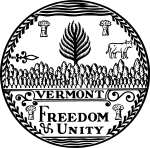1804–1805 United States House of Representatives elections in Vermont
In this article we are going to delve into the topic of 1804–1805 United States House of Representatives elections in Vermont, a fundamental aspect that has gained great relevance in recent years. 1804–1805 United States House of Representatives elections in Vermont is a topic that significantly impacts different areas, from the personal sphere to the professional sphere. Along these lines, we will analyze the different dimensions that 1804–1805 United States House of Representatives elections in Vermont covers, as well as its influence on current society. Likewise, we will delve into specific aspects related to 1804–1805 United States House of Representatives elections in Vermont, with the aim of providing a comprehensive and updated perspective on this topic. In addition, we will explore different perspectives and approaches on 1804–1805 United States House of Representatives elections in Vermont, in order to offer a global and enriching vision. Without a doubt, 1804–1805 United States House of Representatives elections in Vermont is a topic of great importance that deserves to be addressed carefully and in depth, which is why we will delve into its different aspects throughout this article.
| |||||||||||||||||||
All 4 Vermont seats to the United States House of Representatives | |||||||||||||||||||
|---|---|---|---|---|---|---|---|---|---|---|---|---|---|---|---|---|---|---|---|
| |||||||||||||||||||
| Elections in Vermont |
|---|
 |
Vermont law required a majority for election, which frequently mandated runoff elections. The 2nd, and 3rd districts both required second elections in this election cycle, and the 3rd district required a third election.
| District | Incumbent | Party | First elected |
Result | Candidates[a] |
|---|---|---|---|---|---|
| Vermont 1 "Southwestern district" |
Gideon Olin | Democratic-Republican | 1802 | Incumbent re-elected. | √ Gideon Olin (Democratic-Republican) 56.1% Jonas Galusha (Democratic-Republican) 24.0% Chauncey Langdon 18.6% Others 1.4% |
| Vermont 2 "Southeastern district" |
James Elliot | Federalist | 1802 | Incumbent re-elected. | First ballot (September 4, 1804): James Elliot (Federalist) 41.9% Samuel Fletcher (Federalist) 15.6% Mark Richards (Democratic-Republican) 15.5% Pascal P. Enos (Democratic-Republican) 12.1% Aaron Leland (Democratic-Republican) 4.3% Lewis R. Morris (Federalist) 3.1% Elias Keyes (Democratic-Republican) 2.9% Paul Brigham (Democratic-Republican) 1.4% Others 3.1% Second ballot (December 18, 1804): √ James Elliot (Federalist) 62.0% Mark Richards (Democratic-Republican) 36.4% Others 1.6% |
| Vermont 3 "Northeastern district" |
William Chamberlain | Federalist | 1802 | Incumbent lost re-election. New member elected. Democratic-Republican gain. |
First ballot (September 4, 1804): William Chamberlain (Federalist) 48.0% James Fisk (Democratic-Republican) 38.4% Nathaniel Niles (Democratic-Republican) 9.9% Samuel C. Crafts (Democratic-Republican) 2.6% Others 1.2% Second ballot (December 18, 1804): William Chamberlain (Federalist) 49.3% James Fisk (Democratic-Republican) 49.1% Others 1.6% Third ballot (March 25, 1805): √ James Fisk (Democratic-Republican) 56.1% William Chamberlain (Federalist) 42.7% Others 1.2% |
| Vermont 4 "Northwestern district" |
Martin Chittenden | Federalist | 1802 | Incumbent re-elected. | √ Martin Chittenden (Federalist) 50.4% Ezra Butler (Democratic-Republican) 46.7% Others 3.0% |
See also
- United States House of Representatives elections, 1804 and 1805
- List of United States representatives from Vermont
Notes
- ^ Only candidates with at least 1% of the vote listed